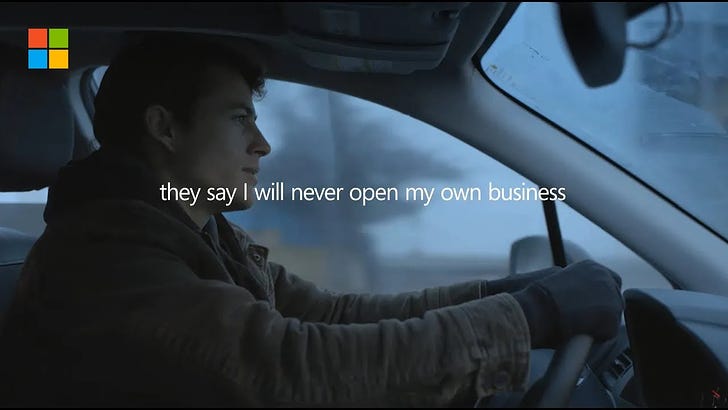As an educator, I’ve spent much of the last decade talking about things like accessibility, inclusive design, and the disparities created from lack of access to the internet. However, as the internet continues to devolve into something far less noble than what was imagined thirty years ago, a new digital divide is emerging. As Google rebrands it’s Bard chatbot into Google Gemini, OpenAI lurches ahead with GPT5, and Microsoft tries to make Copilot a household name, we are all now faced with a new expense that is part of the new normal. Just as we accepted monthly internet bills in the 90s and pricey smart phone plans in the 2010s, we are now being asked to cough up an extra $20 a month for a digital assistant. While I can afford this and will probably pay for it as a part of my research, I am also filled with a little resentment. A brief poll of my students revealed that for many of them this is an economic hardship that they are reluctant to pay, while feeling a sense of falling behind if they don’t.
In the space of a little over a year, three tech behemoths have created a new subscription model as well as a mental model of a utility, like gas and electricity, that everyone has to pay as part living in the modern world. For better or for worse, this is the new normal, and as a parent of teenagers and as instructor of young adults, I’m partially responsible for fanning the flames. I absolutely think you should be using an AI assistant if you have ambitious goals because life is not fair and you will need all the advantages you can get. But now is the time to resist the tyranny of the subscription model, and move to any of the free and open source services out there. I’m a big fan of perplexity.ai, but there are many other options out there. If you’re stuck and want to get ahead, send me a message.
Or, if you’ve decided that you’re willing to cough up $20/month, here’s an article comparing the big three
Microsoft’s Super Bowl Commercial
I didn’t watch the Super Bowl, but I heard Taylor Swift’s team won, so that made my whole household happy. I had intended to get this newsletter out before the game, because Microsoft released this ad (their first consumer commercial in four years) last week. I’m showing it to my students this week because it’s a pivotal moment in how we are being asked to think about AI tools. It’s ambitious and inspiring and aiming to make Copilot a household name. If you were a creative teenager over the last two decades, you probably dabbled with MS Paint before moving into design or whatever you do today. Today’s teenagers are being sold on the promise that AI can help them do anything. The commercial demonstrates the creation of storyboards and the writing of code as well as studying for a chem test. Whether we like it or not, there will be a whole new generation of digital natives who will grow up on these tools. It seems that the households that can pay for them will certainly have an advantage over those that can’t. Regardless of your age, if you’re currently in school or will be looking for work soon, you should probably read this article about how Gen Z is using AI for career growth.
Sam Altman’s $7 Trillion Ambition
Despite reading and writing about this for most of the last year, It’s hard for me to understand numbers this large. In order for OpenAI to scale up and meet their goals, the need [some large number] of GPU’s, and the only way to do this profitably, is to manufacture those GPUs so they are no longer dependent on purchasing them from anyone else. Meta’s Mark Zuckerberg is also on a similar gambit, (but only spending Billions) as he directs funding away from the MetaVerse and towards AI hardware costs because he knows that they can “beat Google” if they can accomplish [some large metric here]. While I don’t want Altman and OpenAI to fail, I do have to include this quote from him. If you’d like a deeper understanding of how to build an AI GPU facility, and the geopolitics involved, read this article.
You can grind to help secure our collective future or you can write Substacks about why we are going [to] fail,
An Example of AI Film Work that Gets Work
I’m a big fan of the Curious Refuge YouTube channel. They were the people behind those viral “Star Wars in the style of Wes Anderson” trailers last year and they also run an AI film school. While I have no metric about what constitutes “good” AI film making and I’m taking their word for it, they said that this piece of student work was actually helping this student get job offers. it’s certainly above my current skill level and I’m placing it here as a time stamp of what was possible at this point.
Note: In my own explorations, I have found that AI filmmaking is expensive! I’m going to wait until summer, when I have more free time, before making my first professional attempt a film, a commercial, or a showreel, or something. If you’re on a similar path, Midjourney and RunwayML are still my preferred tools, but to produce work like this, you’ll need to pay $30 and $95 a month respectively. Runway is an amazing tool, but you’ll need tons of patience and their unlimited plan as many of your prompts will fail. You’ll also need to pay $300 for upscaling software like Topaz Labs.
The Need for AI Workers Keeps Growing
While it’s not a great time to be looking for work in the tech industry, and I hear it’s a tough time to be a designer, there is an increasing demand for people with AI skills. I have read multiple articles in the last week that keep discussing this inevitable job growth. over the past few months, I’ve written about half a dozen major tech companies that are offering free (online) courses). In the latest upgrade, Google has increased it’s free AI classes. You can read about it here.
It’s amazing how quickly the world is changing. Only eighteen months ago, I was still recommending Google’s free UX certification courses.
Midjourney Inspiration: Whispers and Giants
I use Midjourney (or other image tools) almost every day and read voraciously about them, so I shouldn’t be surprised. But every week, I see something that completely blows me away. If you’re new to Midjourney, or just want to what’s possible, check out this photo essay from Whispers and Giants.
Welcome New Subscribers!
I just crossed the 200+ reader threshold and I’m really grateful for all of you who are supporting my work. I originally started this newsletter as a suggestion from one of my students, but I’m now writing for more people who I haven’t actually met. So here’s a brief bit about me: My name is Erik Fadiman and I’m a professor of Graphic Design at Seattle Central Creative Academy. I’m also a Web Developer, UX Designer, and Graphic Designer. At some point in the near future I’m going to be an AI Filmmaker, or AI Consultant, or whatever it turns into. This newsletter is where I share what I’m learning. If you have any questions, suggestions, or hot tips, please send me a message!





